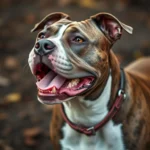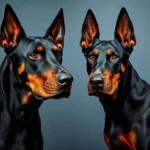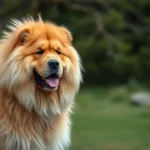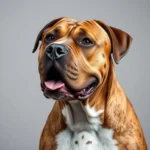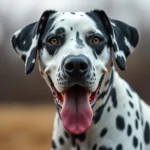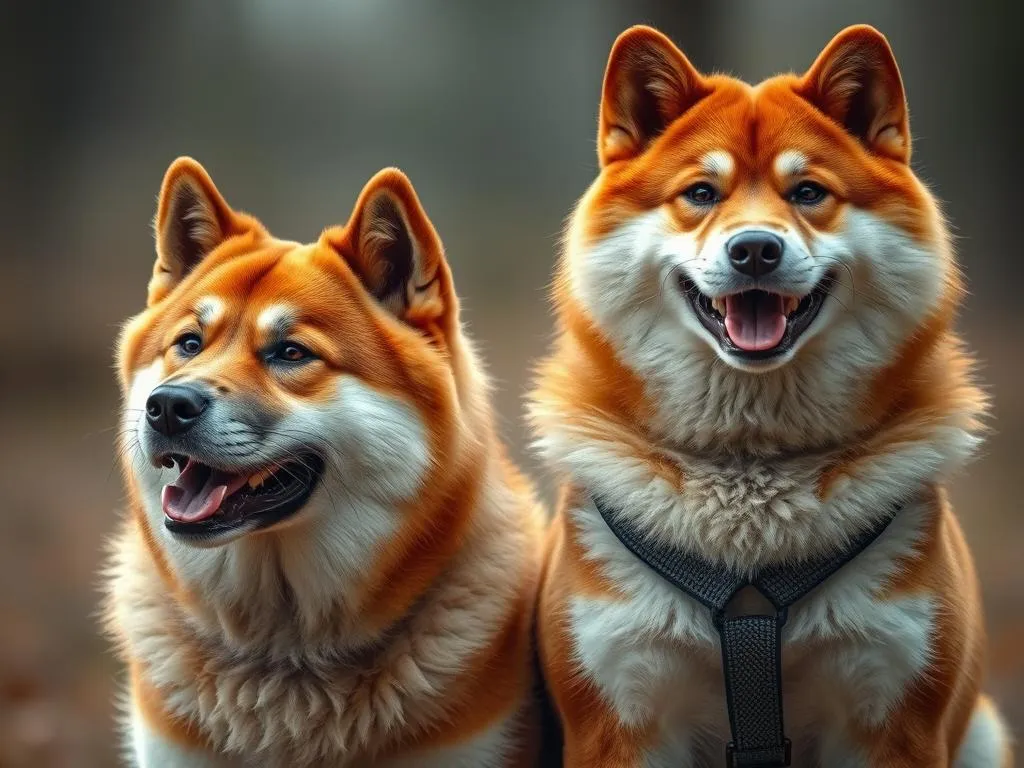
Introduction
The Akita and the Shiba Inu are two beloved dog breeds originating from Japan, each showcasing unique characteristics and traits that endear them to dog lovers worldwide. As both breeds have gained popularity, understanding their differences and similarities becomes essential for prospective dog owners. In this article, we will provide a thorough comparison of the Akita vs Shiba Inu, covering their history, physical characteristics, temperament, training needs, health considerations, lifestyle requirements, and ownership costs. By the end, you’ll be better equipped to make an informed decision about which breed may be the best fit for your lifestyle.
Overview of Akita and Shiba Inu
History of the Akita
The Akita has a rich history that traces back to the early 17th century in Japan. Originally bred for hunting large game such as bears, boars, and deer, the breed was highly esteemed among Japanese nobility and served as a symbol of good health and long life. The Akita’s loyalty and protective instincts made it a favored companion and guardian, especially among families. Over time, the breed was refined, leading to the development of two distinct types: the Japanese Akita Inu and the American Akita. Each type has its own unique traits, but both share the strong, dignified presence that the breed is known for.
History of the Shiba Inu
The Shiba Inu, on the other hand, is Japan’s smallest native breed, with roots dating back to ancient times, around 300 B.C. Originally bred for hunting small game in the mountainous regions of Japan, the Shiba Inu’s agile and keen senses made it adept at tracking and flushing out birds and rabbits. The breed faced near extinction after World War II, but dedicated enthusiasts revived it, establishing a breed standard that highlights its spirited and independent nature. Today, the Shiba Inu is celebrated for its fox-like appearance and lively personality, making it a popular choice among dog lovers.
Physical Characteristics
Size and Weight
When comparing the Akita vs Shiba Inu, one of the most noticeable differences is their size.
-
Akita: Typically, Akitas stand between 24 to 28 inches tall and weigh between 70 to 130 pounds, depending on whether they are of the Japanese or American variety. They possess a robust and powerful build, exuding strength and confidence.
-
Shiba Inu: In contrast, Shiba Inus are much smaller, standing at about 13.5 to 16.5 inches tall and weighing between 17 to 23 pounds. Their compact size and agile body reflect their hunting heritage.
Coat and Color
Both breeds have distinct coat types that contribute to their unique appearances.
-
Akita: The Akita has a double coat that is dense and water-resistant, providing protection against harsh weather. Common colors include white, brindle, and a variety of shades from black to tan. Grooming needs for Akitas are moderate, with seasonal shedding requiring regular brushing.
-
Shiba Inu: Similarly, the Shiba Inu also has a double coat, but it is shorter and softer. Typical colors include red, sesame (red with black-tipped hairs), black and tan, and cream. Shiba Inus shed regularly, and their grooming needs are manageable with occasional brushing to remove loose hair.
Distinctive Features
Both breeds exhibit unique physical traits that make them easily identifiable.
-
Akita: Notable features include their erect, triangular ears, a broad head, and a powerful jaw. Their tails curl over their backs, adding to their regal appearance.
-
Shiba Inu: Shiba Inus are often recognized for their fox-like faces, curled tails, and compact bodies. Their expressions are often described as spirited and alert, reflecting their lively personality.
Temperament and Personality
General Temperament of Akitas
The Akita is known for its calm yet assertive demeanor. They are fiercely loyal and protective of their families, making them excellent guard dogs. However, Akitas can be reserved or aloof with strangers, which necessitates early socialization to ensure they are well-adjusted. They are generally good with children but should always be supervised, especially around younger kids due to their large size and strength. Akitas thrive in a stable environment and require consistent training to channel their protective instincts positively.
General Temperament of Shiba Inus
In contrast, the Shiba Inu is characterized by its spirited, confident, and sometimes stubborn personality. They are known for their independent nature and can often exhibit a cat-like attitude, being both affectionate and aloof. Shibas tend to be good with families and children, but their playful energy requires supervision during playtime. Their strong-willed nature means that early training and socialization are crucial to fostering a well-behaved companion.
Training and Intelligence
Trainability of Akitas
Training an Akita can be a rewarding yet challenging experience. Due to their independent nature, Akitas may display stubbornness during training. Positive reinforcement methods work best, as harsh training techniques can lead to resistance. Early socialization is critical; exposing them to different environments, people, and other animals will help them develop into well-rounded adults. Consistency, patience, and clear commands are key components for successful training.
Trainability of Shiba Inus
Training a Shiba Inu comes with its own set of challenges. Their high intelligence often comes coupled with a strong will, making them less eager to please than other breeds. Like Akitas, Shibas respond well to positive reinforcement, and early socialization is essential to curb any potential behavioral issues. Engaging training methods that keep the Shiba Inu mentally stimulated will yield better results, as they can quickly become bored with repetitive tasks.
Health Considerations
Common Health Issues in Akitas
When considering an Akita, potential owners should be aware of common health issues that may affect the breed. These include hip dysplasia, autoimmune disorders, and certain types of cancer. Lifespan typically ranges from 10 to 15 years, and routine veterinary care, including vaccinations and annual check-ups, is crucial for maintaining their health.
Common Health Issues in Shiba Inus
Shiba Inus are generally healthy dogs, but they can be prone to specific health concerns such as hip dysplasia, patellar luxation, and certain eye conditions. The average lifespan of a Shiba Inu is around 12 to 15 years. Regular veterinary visits, a balanced diet, and proper exercise can help mitigate health risks and ensure a long, healthy life.
Lifestyle Needs
Exercise Requirements for Akitas
Akitas are large, active dogs that require a good amount of exercise to maintain their health and well-being. Daily walks, playtime in a secure yard, and opportunities for mental stimulation through training or interactive toys are essential. Typically, an Akita needs at least 60 minutes of exercise each day. They thrive in homes with space to roam, making them better suited for families with larger yards rather than apartment living.
Exercise Requirements for Shiba Inus
In contrast, Shiba Inus also require regular exercise but can adapt better to smaller spaces. They enjoy daily walks, play sessions, and mental stimulation through puzzle toys or training exercises. A minimum of 30 to 60 minutes of exercise daily is recommended. Shibas are known for their agility and love for running, so access to a secure yard or nearby park is ideal for their active lifestyle.
Cost of Ownership
Initial Costs
When evaluating the cost of ownership for each breed, potential owners should consider the initial costs, including the purchase price, supplies, and training.
-
Akitas: The price range for purchasing an Akita can typically range from $800 to $2,000, depending on pedigree and breeder reputation. Initial setup costs, including food, toys, grooming supplies, and veterinary care, can add another $500 to $1,000.
-
Shiba Inus: Shiba Inus generally have a lower purchase price, ranging from $1,500 to $3,500, again influenced by pedigree. Initial costs for supplies and care can also be around $300 to $800.
Ongoing Costs
Ongoing costs for both breeds may vary based on individual needs and lifestyle.
-
Akitas: Monthly expenses for food, grooming, and veterinary care can total around $150 to $300.
-
Shiba Inus: Shiba Inus tend to have slightly lower ongoing costs, averaging between $100 and $250 per month.
While both breeds require a financial commitment, understanding these costs can help prospective owners budget effectively.
Conclusion
In summary, the comparison of Akita vs Shiba Inu reveals distinct differences and similarities that prospective dog owners should consider. Akitas are larger, more protective, and require consistent training and socialization, while Shiba Inus are smaller, spirited, and often more independent. Each breed has its unique appeal, and the right choice ultimately depends on individual lifestyles, preferences, and family dynamics. Whether you lean towards the loyal and noble Akita or the spirited and agile Shiba Inu, both breeds promise companionship and joy to their families.
Frequently Asked Questions (FAQs)
Are Akitas and Shiba Inus good with children?
Both breeds can be good with children, but supervision is necessary. Akitas are protective and can be gentle, while Shiba Inus are playful yet independent.
Which breed is easier to train?
Neither breed is considered particularly easy to train due to their independent natures. However, Akitas may be more challenging due to their size and stubbornness.
Can Akitas and Shiba Inus live in apartments?
Shiba Inus can adapt to apartment living if given enough exercise, while Akitas generally do better in homes with larger spaces.
What are the major differences in grooming needs?
Akitas require moderate grooming due to their dense coat, while Shibas need less frequent grooming but still shed regularly.
How do Akitas and Shiba Inus compare in terms of aggression?
Both breeds can exhibit protective behaviors, but with proper training and socialization, they can be well-adjusted companions. Akitas may be more protective, while Shiba Inus can sometimes display a more spirited demeanor.
